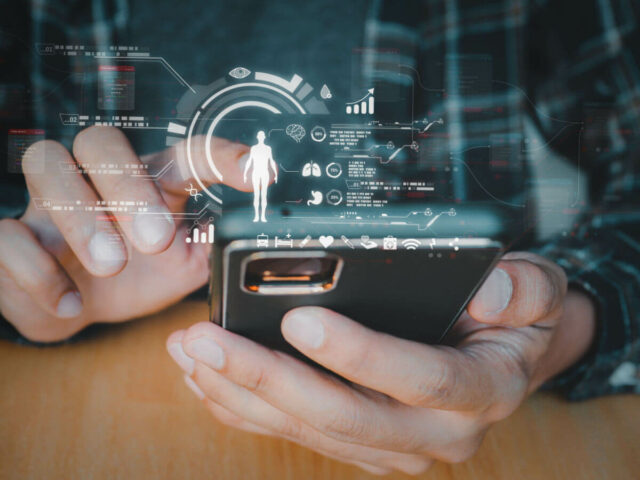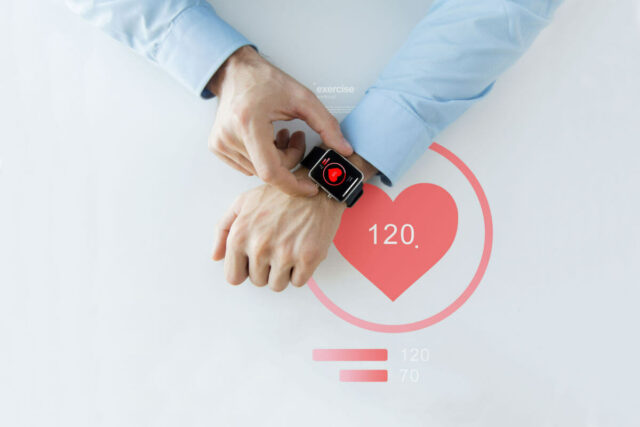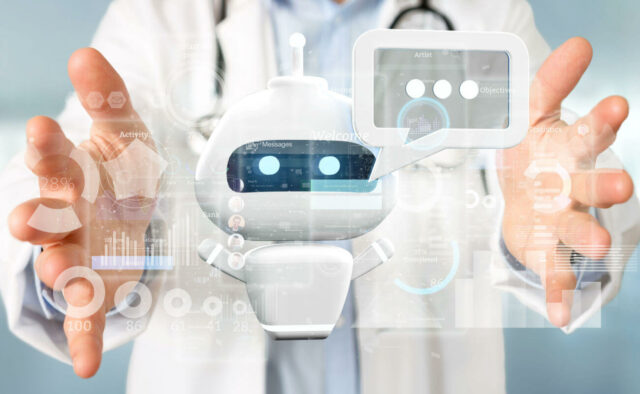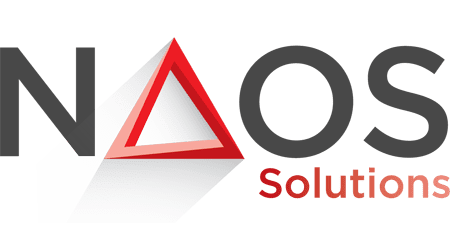In the vast landscape of technological advancements and automation, it’s easy to get swept up in the allure of digital solutions and the promises they hold for the future. Yet, amidst the whirring gears and lines of code, there is a force that transcends algorithms: the human touch. Today, we explore patient support services, where empathy reigns supreme, and the impact of genuine human interaction cannot be replicated.
Imagine a world where every patient encounter leaves a lasting imprint, where healthcare support centers are not just hubs of efficiency but also bastions of compassion. In this realm, the directors of patient support centers and patient experience centers hold the key to unlocking the true potential of exceptional care. They understand the nuanced dance between streamlined operations and the irreplaceable connection forged between human beings.

We delve into the heart of this captivating discussion, where we defend a thesis that withstands the test of time. Despite the breathtaking leaps of technology, the human touch will continue to play a vital role in delivering excellence in patient service. As experts in the field, we present an innovative perspective tailored to astute minds seeking outsourcing solutions to streamline operations, enhance efficiency, and reduce costs wherever possible.
So, let us embark on this captivating voyage into the future of patient support. Throughout this journey, we will uncover the definition of excellent patient service, explore the latest developments in healthcare contact centers, and navigate the growing influence of technology in patient support. We will see how the fusion of technology and human connection yields genuine care unlike anything the healthcare landscape has witnessed.
In The Future Of Patient Support, Excellence Is The New Norm
Defining Excellent Patient Support Service: A Vision of Care
Patient support implies providing accurate, harm-free, and compliant services to the patient with the latest evolution of medical industry regulations. It is already challenging, but delivering excellence in Patient Support Services is even more challenging.
Excellent patient support service provided by a healthcare contact center refers to the highest standard of care and assistance. It enhances the patient experience, ensuring they receive optimal and timely support, guidance, and empathy when interacting with the contact center.

Service excellence is the result of a carefully planned and executed effort. Healthcare support service outsourcers reach excellence when they have worked hard to install a culture of service excellence with:
- leadership that sets clear expectations and puts in place methods to monitor whether those expectations are being met (Percentage of First Call Resolution, Average Wait Time and Abandonment Rate, Average Call Time, Customer Satisfaction Rate)
- identification of service champions,
- high standard and regular training for the agents,
To sum up, excellent patient support has five main aspects: compassionate communication, timely responses to medical inquiries or concerns, knowledge about a wide range of health issues, efficiency in addressing all matters brought before it and handling them with care (privacy protection), and commitment to continuous improvement.
Revolutionizing Healthcare Contact Centers: Latest Developments
Patient engagement, omnichannel platforms, and personalization strategies
Patient engagement strategies involve sending proactive reminders, alerts, surveys, and educational materials to the callers and providing feedback and incentives for healthy behaviors.
Patients want to reach out on their chosen channel— email, the next phone call, the patient portal, the medical App, and so forth. Regardless of what medium they use, healthcare contact centers must be able to provide consistent and personalized experiences.
Personalization strategies involve using caller data and preferences to tailor the call center services and interactions to each individual’s needs and expectations.

Automation
Healthcare is one of several sectors that stand to benefit from automation. Given the ever-growing volumes of data, it is crucial to automate administrative or procedural tasks so that healthcare professionals can focus on what matters: providing treatment.
Automation has been around in the contact center industry for a while. However, recent software advances in AI and CRM are making them more affordable at large scale. Automations broaden a healthcare provider’s reach beyond simple consultation or payment reminders.
They are getting widely used:
- to allow patients to make appointments online
- to calculate an out-of-pocket estimate for the patient’s cost of care
- to send a regular and up-to-date list of all the required documentation before the appointment.
- to manage bills and health information online from any mobile or tablet device
Automation makes it possible to perform procedures more efficiently and effectively when used appropriately and judiciously.
Remote and flexible work arrangements for call center agents
Cloud-based platforms can provide secure and scalable access to the call center software and data from any location and device.
These are examples of how healthcare contact centers evolve to meet the changing demands and expectations of the healthcare industry and consumers.
Emerging Trends in Patient Support: The Growing Usage Of Technology
As they face growing difficulties in recruiting, Medical institutions see technologies as powerful ways to perform tasks that don’t relate directly to patient care.
Harnessing Technology in Patient Support
Technology can deliver patient care services in various ways. It can make healthcare more accessible, convenient, personalized, and effective. Healthcare automation facilitates faster tasks.
The healthcare industry is benefiting from advances in technology that make a variety of processes more efficient, including:
- Patient check-in/check-out processes
- Appointment reminders
- Prescription refills
- Medical record transfers
- Follow-up appointment scheduling
- Patient surveys & questionnaires
- Patient-provider communication
- Educational information distribution
- Intake & consent processes
- Escalation or triage processes
Telehealth
Since the COVID-19 pandemic, remote access to healthcare services has allowed patients to contact their healthcare providers and doctors from their homes or preferred places. Many tools and apps make video consultations with doctors possible and allow patients to monitor their vital signs.
An early consultation can reduce deteriorated health caused by patients’ delaying medical visits. It is especially beneficial for patients far from medical practices or those with reduced mobility.
Wearables
In the not-so-distant future, wearables will emerge as a ubiquitous technology in medicine, revolutionizing patient support and transforming the landscape of healthcare contact centers. These innovative devices range from smartwatches to biosensors, such as smartwatches, fitness trackers, or sensors. These wearables can help them track their physical activity, heart rate, blood pressure, sleep quality, and more, empowering patients to actively monitor their health in real-time.
The future of patient support integrates wearables, enabling healthcare contact centers to offer personalized and proactive care as they leverage the wealth of information collected from these devices. From remote patient monitoring to early detection of health issues, wearables will enhance the accuracy of diagnoses, improve treatment outcomes, and facilitate timely interventions.

By embracing this new frontier of technology, healthcare providers can embrace a future where patient support is not only reactive but also predictive and preventive, ensuring optimal care for every individual.
Breaking Ground with AI and Automation in Patient Support
Medical technology has advanced dramatically. Computing power, storage capabilities, and technological maturity create the conditions for cost-efficient, human-like conversational experiences with machines.
Conversational AI is primed to create a massive impact in the healthcare industry, making machines capable of understanding and responding to human language. In other words, chatbots tend to convince anyone into thinking they’re talking to an actual human.
Artificial intelligence (AI) and natural language processing (NLP) can help understand the caller’s intent, provide relevant information, route calls to the appropriate agents, and generate insights from call data. AI and NLP can reduce call waiting time, improve caller satisfaction, and lower operational costs.
For example, in the contact center, an AI-powered Electronic Medical Record (EMR) can automatically listen along and take notes during the calls. It can create automated documentation that will be easily accessible for future references and in perfect compliance with the Health Insurance Portability and Accountability Act.
Another interesting example of an AI breakthrough in healthcare contact centers is real-time guidance for contact center personnel. They can keep agents updated with the best medical counsel and the upcoming reforms, emerging legislation, and ever-evolving compliance requirements.

Appointment Scheduling through AI systems allows patients to schedule appointments easily without the frustrations of a complicated user interface. Patients can seamlessly book an appointment with their preferred provider or reschedule or cancel an existing appointment.
Med-PaLM 2 is a medical AI model, one of the latest technologies in the medical industry.
At Google’s annual developer conference, the Internet giant announced a new program known as MED-PaLM 2. It is an AI platform explicitly designed to provide answers to medical questions. It can also support contact centers in the patient support industry by providing accurate and helpful information to the support agents in case of doubt. MED-PaLM 2 achieves an accuracy of 85.4% on USMLE questions.
Hence, patient care service can be delivered through technology in various ways. Technology can make health care more accessible, convenient, personalized, and effective.
The Role of Humans in Healthcare Contact Centers
As a patient, receiving medical care and efficient technology is essential, but the human touch sets a positive experience apart. 40% of consumers prefer to seek out a contact center agent for complex issues like payment disputes. Patients want to feel seen and heard, not just like another number in a system. This is where human interaction can significantly enhance patient support services. Patient satisfaction, engagement, and outcomes can improve by providing personalized, empathetic, and collaborative care.
Common Patient Challenges When Navigating Automated Systems
Automated systems undoubtedly offer numerous advantages for patients and healthcare providers, such as convenience, efficiency, accuracy, and accessibility. However, it is essential to acknowledge and address the challenges and risks they can introduce into the healthcare landscape.
Challenges in Patient Interactions
First, communication and relationship barriers can arise from reduced human interaction, empathy, and trust. Patients may feel less comfortable or confident when engaging with chatbots, voice assistants, or robots than human providers who can better understand their unique needs and concerns.
Data entry errors can also occur due to system design, interface, or functionality. Patients may inadvertently select the wrong option from a drop-down menu, input incorrect values in text fields, or overlook required fields, leading to inaccurate information and potential treatment complications.
Alerting failures pose another significant risk. Inadequate or ambiguous notifications can prevent patients from being alerted to critical information such as potential drug interactions, crucial test results, missed appointments, or changes in their treatment plans, compromising their care and well-being.

Risks to Privacy and Security
Automation and default settings within systems can be unpredictable, unclear, or inappropriate, causing patient dissatisfaction and potential harm. Instances may include patients receiving incorrect doses or timings of medication, being assigned to providers different than requested, or receiving services that deviate from their expectations.
Privacy and security breaches represent a pressing concern in automated healthcare systems. Patients may be exposed to malicious attacks, unauthorized access, or accidental disclosures, resulting in the hacking, sharing, or leakage of their sensitive medical records and personal information.
These common issues patients face in automated healthcare systems can be mitigated through enhanced design, rigorous testing, meticulous implementation, and continuous evaluation of the systems. Additionally, comprehensive training and support for patients and healthcare providers are crucial to ensuring efficient and secure system utilization.
The Power of Human Interactions to Overcome Tech Limitations
Regarding patient satisfaction, technological developments can improve process efficiency but fail to provide excellent patient care. Despite technological advancements, the human touch will remain vital in delivering outstanding patient service. Regarding complex social interaction, human intelligence is more capable than artificial intelligence in many environments, especially when understanding and sharing another’s feelings, creativity, empathy, and common-sense reasoning.
Five key human skills cannot be replaced by technology:
1. Human agents possess the ability to empathize with patients and understand their emotional and psychological needs. They can offer genuine compassion, reassurance, and support during challenging times, establishing a sense of trust and comfort that technology alone cannot replicate.

2. Active Listening facilitates effective communication. Human agents can attentively listen to patients, decode their concerns, and comprehend the nuances of their unique situations. This skill allows for a deeper understanding of patient needs and enables the agent to respond appropriately, providing tailored assistance and guidance.
3. Human agents possess Critical Thinking abilities, enabling them to analyze complex social scenarios and make better decisions. They can interpret ambiguous information, identify potential gaps or errors in patient data, and apply their expertise to find suitable solutions or escalate issues to the appropriate healthcare professionals.
4. Healthcare support centers often encounter diverse patient cases and situations that demand Adaptability. Human agents can quickly adjust their approach, tone, and language based on individual patient preferences, cultural backgrounds, or varying levels of health literacy. This flexibility allows for effective communication and ensures patients feel understood and valued.
5. Technology may encounter limitations or technical glitches that require Creative Problem-Solving skills beyond its capabilities. Human agents can address these challenges, providing troubleshooting assistance, guiding patients through complex processes, and offering alternative solutions. Their resourcefulness and ability to think outside the box contribute to a more efficient and satisfactory patient experience.
Empathy and Understanding Fuel Positive Patient Outcomes
Empathy and understanding are the main ingredients for exceptional patient service. Let’s take a peek at some of the benefits they bring to the table:
- Boosted Patient Satisfaction and Engagement
Patients’ satisfaction levels soar When they feel valued, respected, and indeed heard. Empathy and understanding cultivate an environment where patients feel acknowledged and appreciated, resulting in a more positive healthcare experience. This, in turn, fosters higher levels of patient engagement as individuals actively participate in their care. We often underestimate the power of a smile over the phone. It can feel like a breeze of fresh air for a patient who is stressed by a medical inquiry.
- Improved Patient Compliance and Adherence
When patients are met with empathy and understanding, they’re more likely to embrace the doctor’s recommendations and instructions. Empathy is a powerful motivator, empowering patients to take charge of their health.
- Soothed Patient’s Anxiety and Distress
Healthcare can often evoke feelings of anxiety and distress in patients. But when empathy and understanding come into play, the mood changes entirely. Patients feel comforted, reassured, and understood—like they’re wrapped in a warm blanket of compassion. That anxiety and distress melt away, replaced by a sense of calm and confidence in their healthcare journey.
- Preventing Malpractice Woes and Medical Errors
Misunderstandings and conflicts can sometimes slip into the mix, leading to undesirable outcomes. However, when healthcare providers actively listen, empathize, and understand patients’ needs, the likelihood of misunderstandings decreases significantly. This fosters a safer healthcare environment, reducing the risk of medical errors and subsequent litigation. It’s a win-win for everyone involved.
In a nutshell, empathy and understanding are the dynamic pair for excellent patient service. They elevate the quality of care and nurture a relationship built on trust and compassion. By embodying these qualities, healthcare providers establish strong patient connections, improving overall outcomes and a more positive healthcare ecosystem.
Enhancing Healthcare Provider Benefits Through Human Interactions
Improved patient outcomes are related to quality of care, operational efficiencies, patient satisfaction, and positive relationships with insurers.
Patient satisfaction is a vital component of the Healthcare provider’s reputation. When people discuss their level of satisfaction with their healthcare service among family and friends or share their feelings through online platforms, it affects a provider’s reputation, for better or worse. A patient’s satisfaction may focus less on clinical outcomes and more on factors such as whether a health professional explained a medical condition clearly or whether appointment scheduling was smooth.
A good relationship between patient and provider can foster trust, empathy, collaboration, and shared decision-making. Building better relationships can also help the patient feel more comfortable, respected, and understood, reducing anxiety and increasing motivation.

Patients can only be comforted by others rather than turning to cutting-edge and effective medical technology for convenience and certainty. At the end of the day, real personal relationships will distinguish your healthcare institution from other competitors and keep patients satisfied and loyal.
Striking the Balance: Blending Technology and Human Touch in Patient Support Services
Technology and human interaction are both essential components of patient support services. Still, they need to be balanced in a way that maximizes the benefits and minimizes the drawbacks of each.
Let’s see how Patient Support Services can balance technology and human interaction.
Technologies To Augment, Not To Replace, Human Interactions
Technology can be used to enhance the quality, efficiency, and accessibility of human interaction, but not to substitute it entirely. It can enable omnichannel communication, remote monitoring, and feedback collection but cannot replace the empathy, trust, and collaboration that human interaction can provide. Therefore, technology should be used to free up human interaction time and resources, not eliminate it. Accordingly, it should be used to automate repetitive tasks, provide data-driven insights, and facilitate coordination and collaboration. In contrast, human interaction should be used to provide personalized care, emotional support, and shared decision-making.
An AI-driven voice analysis is a compelling example of how technology can augment human interactions in a healthcare contact center. It shows promise as a screening tool for Parkinson’s disease. A patient Support Contact center equipped with this AI detection tool could facilitate early diagnosis and track the effectiveness of treatment.

Technology to Advance Service Accessibility
Technology can be a source of frustration, confusion, and distrust if it is not designed with the user’s needs, preferences, and values in mind. For instance, complex, unreliable, or intrusive technology can undermine the patient’s experience and satisfaction. It should be user-friendly, transparent, and ethical to achieve a balance with human interaction. It should also be easy to use, understand, and access; it should provide clear and accurate information and feedback and respect the patient’s privacy, autonomy, and dignity.
The ethics of AI still needs deep thinking and regulation before it can (and should) replace humans and adapt to the user’s context and preferences.
CONCLUSION
To ensure that your patients feel they are being looked after, you want to ensure they have the proper care, technology, and personal interactions. While cutting-edge technology can offer easily automated healthcare practices, patients still need human contact to feel valued and safe. By combining technology’s convenience with human interaction’s effectiveness, new healthcare tech tools like telemedicine, chatbots, and AI programs provide several chances to enhance the doctor-patient connection. Integrating technology systems with human interaction may raise the practice’s reputation and patient happiness when done correctly.
In the ever-evolving landscape of healthcare contact centers, the quest for excellence in patient support remains paramount. NAOS CX is the trusted partner of directors of Patient Support contact centers who seek to outsource solutions to enhance patient experiences and optimize their operations. With a proven track record in providing world-class outsourced contact center services tailored specifically for the US healthcare industry, we invite you to take the next step toward transforming your organization.
Imagine a future where every patient interaction is characterized by empathy, efficiency, and cost-effectiveness. NAOS CX is committed to making this vision a reality for your healthcare contact center. Our team of experts is ready to collaborate with you, leveraging our industry expertise and cutting-edge technologies to improve patient experiences and reduce contact center costs in 30 days.
As you navigate the future of patient support, it’s crucial to understand the differences and overlaps with customer service. For more insights, read our article on Patient Support Vs. Customer Service.

